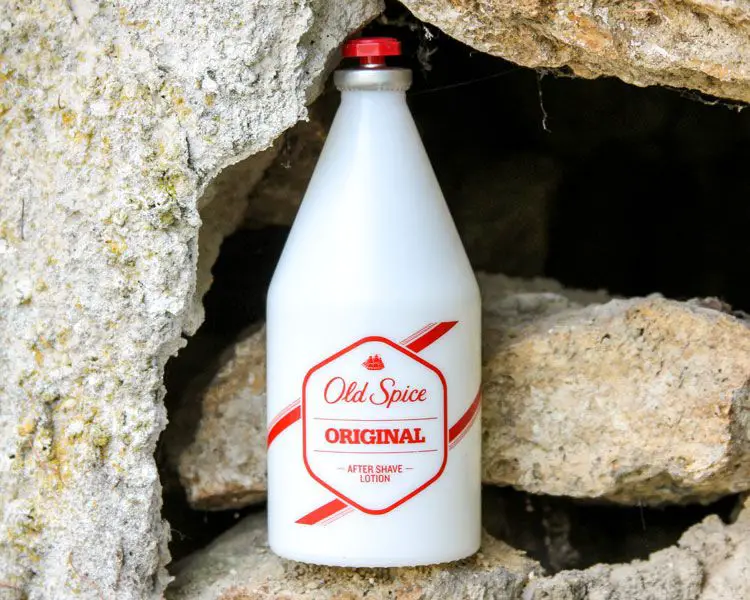Can You Naturally Scent Candles?
Naturally scented candles are candles that are scented using essential oils, dried flowers, herbs, spices, and other natural materials rather than synthetic fragrances. The popularity of naturally scented candles has grown in recent years as more consumers seek out natural products. Burning naturally scented candles can provide several benefits compared to traditional candles made with synthetic fragrances.
Naturally scented candles use plant-based essential oils, pressed flower petals, wood wicks, soy wax or other natural waxes rather than paraffin wax and artificial fragrances. The natural scents come from plants, flowers, herbs, and spices like lavender, rose, jasmine, vanilla, cinnamon, and clove. Using these natural scents provides a more authentic, soothing aroma compared to artificial fragrances.
According to one source, “Naturally scented candles are the perfect way to add a wonderful, subtle fragrance to your home space, and to eliminate any unwelcome odors.” (https://naturalzen.ca/blogs/news/what-are-the-benefits-of-burning-candles)
The benefits of naturally scented candles include providing therapeutic effects from aromatherapy, giving off less soot and being better for indoor air quality, and having a more natural, subtle scent compared to synthetic fragrances. Overall, consumers are increasingly seeking out natural scented candles as a healthier and more pleasant option for home fragrance.
Essential Oils
Essential oils are very popular for scenting candles naturally. They are extracted from plants through steam distillation or cold pressing. Common essential oils used in candle making include lavender, eucalyptus, lemon, peppermint, and tea tree (Source: https://www.candlescience.com/essential-oil/all-candle-essential-oils/). Essential oils provide a pure, natural scent, but you have to be careful with proper blending and wick size, as some oils can trigger “mushrooming” or “sooting” in candles if not mixed properly. Essential oils can be purchased from online retailers like CandleScience and BrambleBerry that cater specifically to candle makers.
When working with essential oils, start by experimenting with single note scents to understand how each oil behaves. Then you can create your own signature blends. Some popular essential oil scent combinations for candles are lavender-eucalyptus, lemon-peppermint, and orange-clove.
Dried Botanicals
From the
Bulk Apothecary sources, dried herbs, flowers, and botanicals have long been used to provide natural fragrance in candles. Some popular dried botanicals to scent candles include lavender, rose petals, jasmine, chamomile, peppermint leaves, and vanilla beans. The fragrant essential oils are locked within the plant matter and get released when heated in wax which allows the aromas to infuse the wax and scent the candle.
Compared to synthetic fragrance oils, dried botanicals provide a more natural, subtle scent. The fragrance is not as strong initially, but lasts longer. Dried ingredients can be mixed and blended to create custom, signature scents. Popular scent combinations include lavender-chamomile, rose-vanilla, and jasmine-mint. Experimenting with different herbs, spices, flowers, and custom blends allows creative freedom when making naturally scented candles.
When using dried botanicals, it’s important not to overfill the candle jar as the plant matter can clog the wick while burning. Lightly sprinkling or lining the inside of the jar creates just enough aroma. The Northwood Candle Supply recommends .5-1 tablespoon of dried botanicals per pound of wax. Going easy at first creates a lightly scented candle. Increase amounts for a stronger scent if desired. With the right balance, dried flowers, herbs and spices create stunning, naturally fragranced candles.
Citrus Peels
Citrus peels like orange, lemon, lime, and grapefruit can make fantastic natural scents for candles. The oils in the peels contain powerful aromatic compounds that are released when heated, infusing candles with bright, refreshing citrus fragrances. According to Partylite, pairing citrus peels with herbs like sage creates a “powerful & bold fruity fragrance.” Popular citrus peel candle scents include combinations like lemon and vanilla, as seen in Wicks N’ More’s Orange Peel candle, and mandarin orange with cinnamon, like Rustic House’s Orange Peel + Cinnamon candle. The natural oils in citrus peels allow candle makers to create authentic, vibrant citrus scents without artificial fragrances. When working with citrus peels, it’s important to fully dry them first to maximize scent release. Overall, citrus peels are an easy, natural way to infuse bright, summery aromas into homemade candles.
Wood Wicks
Wood wicks are a special type of candle wick made from natural wood fibers instead of conventional cotton or paper wicks. When a candle is lit, the wood fibers in a wood wick burn along with the wax, producing a distinctive crackling sound reminiscent of a cozy fireplace. But wood wicks also have a unique ability to release fragrance as the candle burns.
The porous structure of wood fibers absorbs and retains fragrance oils from the melted wax surrounding the wick. As the wood wick heats up during burning, the absorbed oils are gently warmed and released into the air as aroma. This provides a continuous fragrance experience throughout the entire burn time of the candle. Wood wicks can hold 2-3 times more fragrance oil than regular wicks, resulting in a stronger scent throw. The natural permeability of the wood also prevents the wick from becoming clogged or drowned as it repeatedly absorbs and releases oil (Yankee Candle).
In summary, wood wicks act as a fragrance diffuser to provide a more intense, long-lasting scent from candles. The wood material enables the wick to capture and emit aroma oils in a unique way not possible with standard wick materials.
Soy vs Paraffin Wax
When comparing soy wax versus paraffin wax, one of the key differences is in scent throw and intensity. According to Lone Star Candle Supply, soy wax tends to have a stronger scent throw than paraffin. The natural properties of soy wax allow it to hold fragrances better. The more dense molecular structure absorbs and retains scents.
Paraffin wax, on the other hand, is lighter and has larger wax crystals. This makes it less effective at holding onto fragrances. The lighter weight means fragrances can dissipate more quickly from paraffin wax. As Simple Ness Collection explains, soy candles will fill a room with aroma for a longer period than paraffin candles.
If you want your homemade candles to have a strong hot scent throw, soy wax is generally a better choice than paraffin. The ability to hold fragrances better gives soy wax candles a more intense and long-lasting scent.
Candle Jars
The material used for candle jars can impact how the fragrance of the candle is dispersed and preserved. Glass and tin are common materials for candle jars, with each having their benefits for fragrance:
Glass jars allow the fragrance to be dispersed more evenly as the candle burns. The smooth nonporous surface does not trap or absorb fragrance like some materials. Glass also provides an air tight seal to maximize fragrance preservation (A Complete Guide To Types Of Candle Jars).
Tin containers disperse fragrance well when the candle is burning, but may absorb some of the fragrance into the tin over time. Tins allow for visually appealing labeling possibilities. Gel candles and soy candles often use tins because the metal helps the wax pool evenly as the candle burns (A Complete Guide To Types Of Candle Jars).
Scent Combinations
Some popular essential oil scent combinations for candles include:
Citrus scents like lemon, grapefruit, and bergamot create an uplifting and energizing aroma. You can blend 2-3 drops each of lemon, grapefruit, and bergamot essential oils for a bright citrus candle.
Lavender is a versatile scent that can be blended with many other oils. Pairing lavender with sweet orange or tangerine creates a relaxing yet cheerful scent. Use a 2:1 ratio of lavender to orange or tangerine oils.
For an earthy autumn scent, blend cinnamon, clove, and orange essential oils. The spicy notes of cinnamon and clove mixed with bright orange make a warming candle perfect for fall. Use a 2:2:1 ratio of these oils.
Eucalyptus, peppermint, and tea tree oils have healing aromas. Combining them creates an invigorating minty scent that’s great for candle. Use equal amounts of each oil for balance.
Vanilla and sandalwood are cozy scents perfect for bedroom or living room candles. Pair them with a floral like jasmine or ylang ylang. A 2:2:1 ratio works well for these combinations.
Experiment with your own custom essential oil blends to create signature scents. Record your test recipes so you can replicate ones you love. Refer to an essential oil blending chart for guidance on mixing ratios.
Testing and Experimenting
Testing candles for scent throw is an crucial part of the candle making process. Scent throw refers to how strongly a candle’s fragrance is dispersed into the surrounding area when the candle is burning. There are two types of scent throw: hot throw and cold throw.

Hot throw refers to how strongly the candle will smell while the wax is in its liquid state as the candle burns. Cold throw is how strong the scent is when the candle is not lit (Gariepy, 2022). Testing for adequate hot and cold throw ensures the candle fragrance is sufficiently strong and enjoyable for the user.
Some methods for testing scent throw at home include doing a cold sniff test, burn testing in small environments like a bathroom, and keeping detailed notes in a candle testing log. It’s recommended to test candles at 6-8% fragrance load during the development process. Testing helps identify if more or less fragrance oil is needed for a nicely scented candle.
According to Armatage Candle Company (2020), testing hot throw involves burning a candle in a small room like a bathroom for a normal amount of time, taking note of how well the scent fills the space. Bramble Berry (2022) suggests doing baseline testing properly will ensure any worthwhile fragrance produces good hot throw around the 6-8% fragrance load level. More fragrance oil does not always mean a better smelling candle.
Conclusion
In summary, using natural scents and ingredients in candles offers many benefits over synthetic fragrances and paraffin wax. Key points discussed include:
- Natural essential oils and botanicals provide therapeutic aromas that can help reduce stress, improve sleep and mood.
- Natural soy, coconut, beeswax burn cleaner and cooler than paraffin wax, producing less soot.
- Natural waxes like soy and beeswax are also biodegradable and environmentally friendly.
- Wooden wicks don’t release toxins and provide a cleaner burn.
- Testing natural scent combinations allows finding personalized therapeutic aromas.
- Supporting small, local businesses by buying handmade, natural candles.
Overall, handcrafting candles with natural ingredients offers many benefits for your health, home, and environment over mass-produced synthetic candles.
The possibilities for creating your own natural scented candles are endless. With some experimenting you can find your perfect aromatherapy candles to delight your senses.




